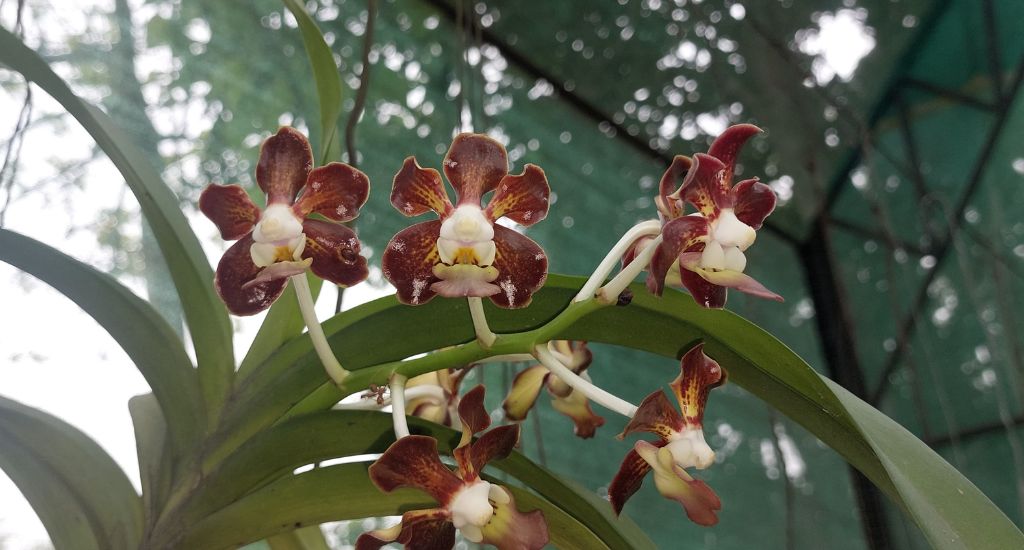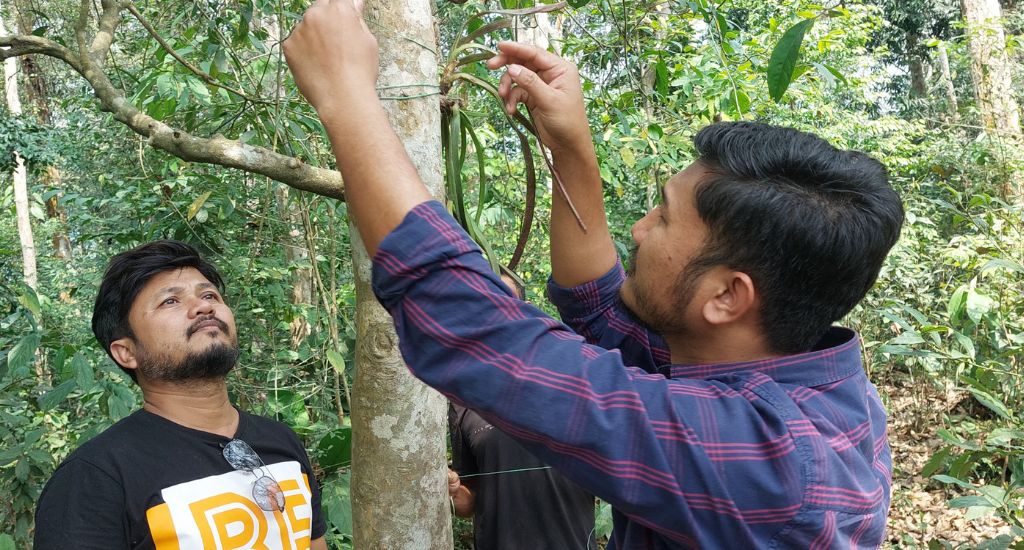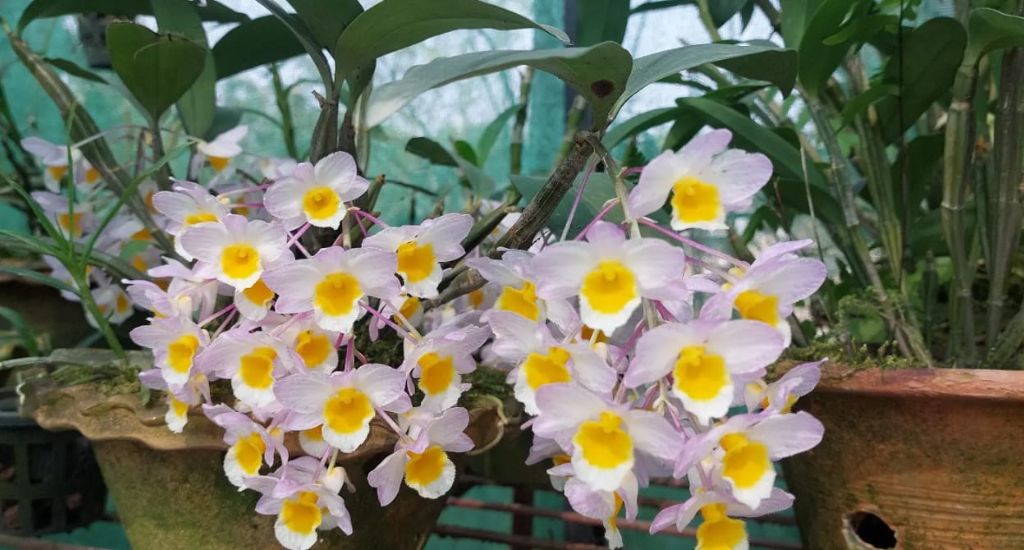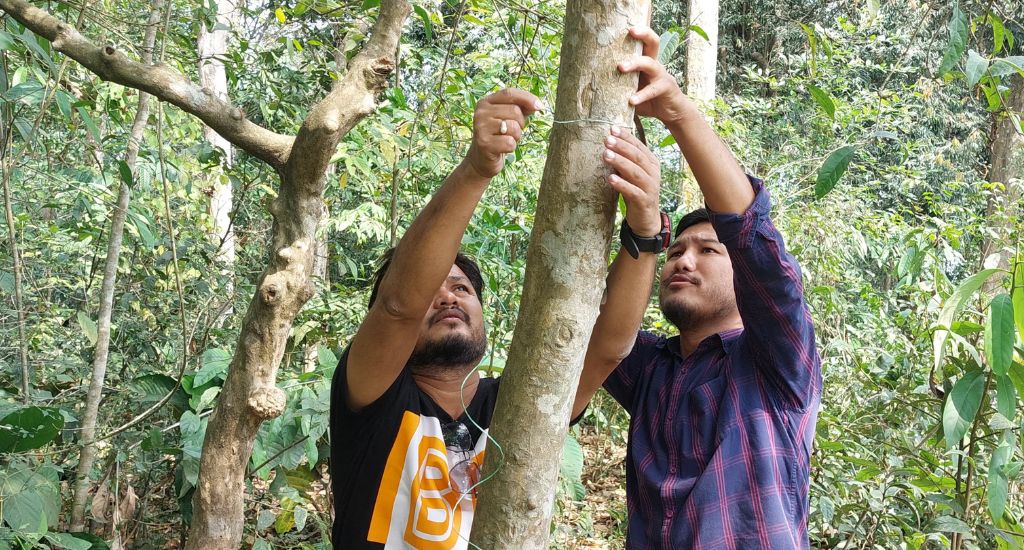In Assam, the blooming of the foxtail orchids, or the kopou phool, marks the coming of spring.
The exotic rare orchid, which is the state flower of Assam, sparked a curiosity in Ankur Rajgogoi who decided to find out about different varieties of the plant. Over a decade ago, in 2010, he decided to plant a foxtail orchid at his home in village Kukurasora of Charaideo district as he found himself staring at the flower.
“In Assam, it is easy to get two species of the Dendrobium genus (the orchid family). When I started out, conservation was not on my mind. I was simply enchanted by the kopou phool,” says Rajgogoi, a chemistry teacher at the Dr Radhakrishnan Arts, Commerce and Science College, Dibrugarh.

In 2014, he reached out to Khyanjeet Gogoi, a resident of Tinsukia district, who lent him a few orchid species to conserve and propagate.
Gogoi happens to be one of the oldest orchid conservers in Assam, and at his home, Rajgogoi realised the world of orchids was vast, beyond the flowers he had only come to know due to his obsession with the state flower.
His passion project took on an urgency, faced with a proposed four-lane road that posed a threat to trees and the orchids growing on them. He started on a collection spree.
“I collected a lot of orchids when the government was pushing the construction of the four-lane road. I had friends across the country who provided me with different species. Some gave them for free, and others sold them to me,” reminisces Rajgogoi.
Today, he has 2,100 species of orchids, with 600 belonging to northeastern India.
Rampaging deforestation destroying orchids
Deforestation, he explains, is rampant in several areas of Assam and orchids being epiphytes or plants that grow wild in tree canopies can’t survive without the host trees.
“A lot of people in Assam, including villagers, are not aware that trees create an environment for the orchids to grow. I want to increase awareness about not cutting trees so we don’t lose out on orchids in the future,” adds Rajgogoi.

While plucking orchids from forests is not allowed in Assam, people do so surreptitiously to sell them. The forest department staff, despite their limited understanding of orchids, fortunately, reach out to him when they notice such activity and provide him with the plants to aid his conservation efforts, says Rajgogoi.
Rajgogoi is also a part of Tosehim, an orchid conservation society, planting orchids in the Chala Reserve Forest along with other enthusiasts such as Manoshyam and Dr Dipankar Borah.
“The Chala Reserve Forest has 120 species of orchids but has lost many rare species, too. I am conducting a trial to discover the lost orchids and plant them back in the wild,” Rajgogoi tells Village Square.
Education through ‘Orchid Garden’
With global warming and deforestation continuing to be a concern, orchids are slowly going extinct. “The heat has been too intense this year in Assam. We have to try our very best to save orchids using both in-situ and ex-situ conservation,” says Rajgogoi.
Through his own ‘orchid garden’ at home which has more than 2,100 species, he is trying to create awareness among villagers about the untapped economy of harvesting orchids.
“Even for buying bouquets, Assam orders flowers from Kolkata and Mumbai while ignoring the state’s own orchids. Any hybrid species in Assam can cost from Rs 600-Rs 1,000. Think of the economic benefit that our state is yet to tap into,” explains Rajgogoi.
“In our state, the elite don’t attach importance to orchids. The poor may be curious, but they need to be made aware of the profits such plants can bring,” he says.

Rajgogoi’s orchid garden attracts school-going as well as college students for research on their dissertations. But the research work on orchids in the state barely scratches the surface.
“We are more than ready to help institutes such as the Botanical Survey of India to work on tissue culture or creating orchid hybrids. Sadly, researchers only show interest at the start and nothing comes of it eventually,” he laments.
“Look at Thailand, where 30 percent of the economy’s income comes from orchids. We are willing to import from Thailand when we should be tapping into our indigenous varieties,” says Rajgogoi.
The lead image on top shows conservationist Ankur Rajgogoi monitoring the progress of his orchids. (Photo courtesy of Ankur Rajgogoi)
Aatreyee Dhar is an independent journalist based out of Assam.








